INDIANAPOLIS — Kirk Cousins will surprise you. Just when you think you’ve got the Washington quarterback figured out, he does something entirely unexpected and flips your entire perception of his future. Cousins was a mess for years, a turnover machine whose most appealing quality to Washington fans was the simple fact that he wasn’t Robert Griffin. Then, as if it had suddenly occurred to Cousins he might want to avoid throwing interceptions, he stopped: The same quarterback who threw a pick on 4.3 percent of his passes before the “You Like That!” win over the Bucs in 2015 has dropped his interception rate to 1.6 percent since.
Washington franchised Cousins after what amounted to a little more than a breakout half-season in 2015, and Cousins promptly delivered a superb follow-up campaign. He finished seventh in passer rating and sixth in opponent-adjusted QBR while helming an offense that ranked fifth in DVOA. At 28 and with no notable injury history, Cousins made more than enough of a case for a long-term deal.
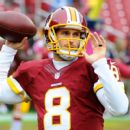
Quarterback Kirk Cousins was slapped with the Redskins’ exclusive franchise tag on Tuesday.
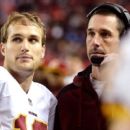
Quarterback Kirk Cousins would prefer to play for the 49ers and coach Kyle Shanahan next season if he were to be traded by the Washington Redskins, a source told ESPN’s John Keim.
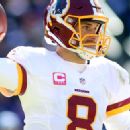
Kirk Cousins makes a lot of sense as the 49ers’ starting QB, but they should not rush to trade for him when they might be able to sign him next year.
2 Related
Surprisingly, what seemed like it would be an expensive-but-routine negotiation to keep Cousins in burgundy and gold is spiraling out of control. And while Washington placed the exclusive franchise tag on Cousins, the stories aren’t going away. Cousins doesn’t want to be in Washington. He wants to leave, likely to rejoin former offensive coordinator Kyle Shanahan in San Francisco.
Whether it’s a ploy from the Cousins camp or a genuine desire to leave, Washington’s starting quarterback has decided to essentially take the winnings after a year of betting on himself and double down. Now that he’s one year away from holding all of the cards in unrestricted free agency, Cousins has suddenly become the most interesting player of the 2017 offseason.
If Cousins is serious about refusing to sign an extension in the hopes of leaving town, everything changes, and the impact stretches far beyond D.C. Let’s run through some of the teams (and players) impacted by the Cousins uncertainty, before delving into Cousins’ trade value.
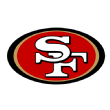
Obviously, the 49ers find themselves in a fundamentally different place if they believe that they’re going to attract Cousins to join their organization after the 2017 season. If San Francisco expects to acquire Cousins next offseason, it won’t be using the second overall pick on somebody like Mitch Trubisky or Deshaun Watson. The 49ers may not have used their pick on a quarterback anyway, but they can either stay put at No. 2 and grab some much-needed help in the secondary or trade down to a team that wants to leap ahead of the Bears at No. 3 for a quarterback.
Even if you’re more skeptical of Cousins than the numbers indicate, the 49ers would be lucky to come away with a league-average quarterback making market value for free. Pro Bowl quarterbacks don’t hit free agency in the prime of their careers. The last example might be Drew Brees, and even he was recovering from a torn labrum in his throwing shoulder. Cousins wouldn’t offer the ceiling that comes with a rookie quarterback making a fraction of his market value a la Dak Prescott, but the Michigan State product would offer a far higher floor than anyone else the 49ers would have a prayer of acquiring.

Speaking of the Bears, they probably weren’t in line to acquire Cousins, but they have an easier path to a quarterback with the third overall pick if John Fox and Ryan Pace are so inclined to take one. The Browns are still in the catbird seat and can draft a passer at No. 1 overall, but if the 49ers are out of the market this year, Chicago has a much better shot at landing the guy they want with the third pick. There’s also a veteran option whose price might come down …

The possibility of the 49ers ending up with Cousins hurts the Patriots’ leverage if they’re trying to trade away Garoppolo. Adam Schefter reported on Wednesday morning that New England is not expected to trade the QB right now, but that won’t stop teams from making offers. San Francisco was one of the teams widely expected to be interested in acquiring the promising young quarterback, and if it is out of the picture, Bill Belichick will have one fewer team to negotiate with over the next few weeks. This is a slight plus for teams such as the Bears, Browns and Texans.
Of course, if the 49ers want to be particularly aggressive, they could still try to consummate a trade for Garoppolo this offseason under the idea that they’ll let him play out the final year of his rookie deal and establish his value before franchising the Patriots backup and trading him to the highest bidder. And hey, if Garoppolo plays like a star, maybe Shanahan and John Lynch decide to hold onto Garoppolo after all …
The quarterback draft class
This isn’t good news for the likes of Trubisky and Watson, who are likelier to free-fall down the first round if the 49ers are out of the quarterback race. It is good news, on the other hand, for teams such as the Bills (who pick 10th) and Cardinals (13th), who might be able to grab their quarterback of the future without needing to trade up. (It remains to be seen, of course, whether any of these passers are any good.)
While it’s no surprise San Francisco’s incumbent quarterback decided to opt out of his deal in advance of Thursday’s deadline, his old team’s reported interest in Cousins may still eliminate what would have been one of Kaepernick’s most plausible destinations. It’s entirely possible Kaepernick might have tested the market, found little to his liking, and returned to the only professional organization he has known.
Now, given that the 49ers would be in line to add only a one-year stopgap before going into full pursuit of Cousins, Kaepernick doesn’t really make sense. He just turned down the option to return to the team on what would have been a one-year deal, so it won’t exactly be Kaepernick’s first choice. At this point, Kaepernick will have to look towards teams like the Jets and Browns for long-term stability, while the 49ers will find another short-term solution in 2017.

It seems interesting that the chatter around Cousins hasn’t yet touched the Rams and new head coach Sean McVay. It’s true that the Rams are committed to Jared Goff, whom they drafted with the first overall pick last year, but Goff was drafted under the Jeff Fisher regime and was terrible last season. It’s too early to move on from the Cal product, but if he continues to struggle in 2017, Los Angeles will likely start pursuing plausible replacements for their quarterback of the future.
Nobody really knows how Washington might value Goff, but the Rams weren’t the only team who thought Goff was the best quarterback in last year’s draft class. Goff could be part of the return for Cousins in a trade. It’s also true that for whatever Shanahan saw in Cousins, the quarterback only leaped forward once Shanahan was fired and left for Cleveland. McVay oversaw Cousins’ ascension into the upper echelon of pro quarterbacks, and if the Rams somehow scrounged up the assets to trade for the QB, it seems likely McVay could convince Cousins to sign an extension and stay.

A Shanahan raid on Cousins could hurt his father’s former employers in Denver. The Broncos were never likely to have a clear path toward Cousins, but they were the team best-positioned to go after the top of the free-agent class at quarterback this year. They’ll have competition from the likes of the Texans and Bills, but no other organization a stone’s throw from the playoffs can match Denver in terms of cap space ($44.4 million).
John Elway was well-positioned to come away with his pick of the top passers available. Denver is still in a good spot, but now …
The relative cream of the free-agent quarterback crop could benefit from the uncertainty surrounding Cousins. None of these passers would have wanted to go play for the 49ers, with San Francisco possibly serving as a safety squad for Taylor, who remains in limbo with the Bills. (Romo and Cutler might very well have decided to retire before heading there.) They would otherwise have been left competing for scraps after the Broncos made their decision, either settling for competitive teams with major cap problems (the Texans) or middling-to-bad teams with money to burn (the Browns).
Now, though, there’s another team in the picture. If Washington is going to move on from Cousins this offseason, they suddenly become a competitive team in need of a quarterback with money to spend. Scot McCloughan would have $64.5 million in cap room if he traded Cousins away without taking on any additional players, which would leave Washington as a very competitive suitor with Denver for those veteran quarterbacks. Imagine if McCloughan signed Tony Romo and lined him up against the Cowboys twice in 2017! Wouldn’t that be fun?
Cousins for Romo or Cousins for Taylor isn’t a swap Washington would like to make. But if Cousins is leaving, McCloughan could pick up draft picks now while acquiring his replacement quarterback shortly thereafter. What would a Cousins trade look like, though?
The trade
If Washington truly believes that Cousins doesn’t want to be its quarterback, it’s probably best to trade him now. It’s not hard to imagine a fickle Washington fan base turning on Cousins this season in what amounts to a lame-duck campaign in advance of the 2018 offseason, when it will be difficult to retain the wantaway quarterback. Washington would owe Cousins a 44 percent raise and a one-year deal for $34.5 million under the franchise tag next season, which is untenable even if Cousins were an MVP candidate. Not only would Cousins be the highest-paid quarterback in football, he would have a cap hit nearly $10 million larger than any other player in the league.
A trade would make the most sense, but it’s not going to be the sort of franchise-altering deal Washington reportedly wants for Cousins, using the haul it sent to the Rams for the pick it used on Robert Griffin as an example. The economics and leverage are entirely different. When Washington wanted Griffin, it had no way to get the Baylor star besides trading up to the second overall pick. It couldn’t just wait a year to sign Griffin in free agency. Furthermore, Griffin was coming to town on a contract with as many as five cost-controlled years available. He ended up making $21.1 million over four years with Washington. Cousins will top that figure with the first check he gets from another team.
So then, Cousins isn’t going to generate three first-round picks. The Broncos got two first-round picks, a third-rounder and Kyle Orton for a disgruntled Cutler and a fifth-round pick, but Cutler was 25 years old and three years away from free agency when the Bears made their move. Two first-round picks might be a lot to ask. On the other hand, Cousins is more valuable than Alex Smith, who netted the 49ers a pair of second-round picks from the Chiefs when he was traded to Kansas City. Smith didn’t have Cousins’ numbers and was seemingly unnecessary in San Francisco with the ascension of Kaepernick, but he was about to turn 29 and had two years left on his contract. Cousins should be more valuable than Smith.
Cousins’ trade value seems to be in the range of a first-round pick and another less valuable selection, with San Francisco being motivated to make the deal out of concerns that McCloughan will slap Cousins with the transition tag and match the 49ers’ offer in 2018. All first-round picks aren’t created equal, though, and San Francisco would be foolish to send the second overall selection to Washington for Cousins.
A swap of first-rounders makes more sense, with Washington exchanging the 17th pick for the second selection. Chase Stuart’s draft value chart measures that swap as worth 13.6 points of draft capital, roughly equivalent to the 27th selection in a typical draft. The 49ers have two fourth-round picks after picking up a compensatory selection for Alex Boone; maybe they send the 109th selection to Washington and get the fifth-round pick Washington grabbed from the Saints (154) in return. Now we’re up to 15.8 points of draft capital, roughly equivalent to the 19th pick.
The 49ers could finish out the deal by including Eric Reid, who has been an excellent safety at times while struggling with various injuries. Washington has been a mess at safety over the past several seasons, and Reid — in the fifth-year option of his rookie deal — would be a massive upgrade on DeAngelo Hall and Donte Whitner in the defensive backfield. This wouldn’t be fair market value for Cousins, but picking up Reid and what amounts to a mid-first round pick for a player who doesn’t want to be in town and is likely to leave after the season would make sense.
The aftermath
For all we know, Washington may end up better off trading Cousins away. The Rams didn’t regret passing up their shot at Griffin. The Broncos were better off without the maddeningly frustrating Cutler. The 49ers did end up missing Smith, but he was seen as far more replaceable at the time than Cousins is now. If Washington can take the money it saves on Cousins and apply it to a deal for Taylor or Romo, it may very well come out ahead on the deal as a whole.
One of the arguments popping up inside the building was mentioned this week by ESPN’s Stephen A. Smith, who said Washington players had accused Cousins of running plays to pad his numbers while the team was struggling or down. This seems like a reasonable hypothesis to test: Is there any evidence Cousins is stat-padding when his team needs him to take chances downfield?
Not really, no. QBR is built on a win expectancy framework and would sniff out Cousins picking up vast quantities of yardage that meant relatively nothing in the scheme of winning football games, and the Washington quarterback still finished sixth in the league there. He was fifth in individual DVOA among quarterbacks, which can be a problematic stat for players but also would point out if Cousins was stat-padding.
To be specific, ESPN Stats & Information can track all the statistics generated by quarterbacks on drives that started with their teams having no better than a 15 percent chance of winning the game. We can compare Cousins in garbage time to everyone else in those same situations. He was the fifth-best quarterback in the league by passer rating on those drives and third in QBR, but Cousins wasn’t accruing yardage by checking down and letting his receivers do the work.
The average pass in that situation traveled 8.5 yards in the air. Cousins’ average throw on these drives traveled 9.3 yards in the air, the seventh-highest mark in the league. In fact, Cousins got virtually no help from his receivers on those throws. They produced an average of 3.7 yards after catch on Cousins’ completions on those 15-percent-or-less drives, which was the lowest mark for any quarterback. There doesn’t appear to be strong evidence supporting the claims of those Washington players.
What’s most fascinating about Cousins right now, though, is what his decision could mean for the future of how players negotiate contracts. The NFL is understandably a risk-averse league; given the incredible attrition rate from injuries, it’s no surprise that players often opt for immediate security over chasing the maximum possible earnings available. (For what it’s worth, players in other American sports with less vicious injury rates, like position players in baseball, often make the same decision.)
Andrew Luck seemed like the first player in years who might have been able to buck the system and go year-to-year while daring his team to continually franchise him at a rapidly escalating rate or send him into unrestricted free agency. Luck took security, taking $75 million over the first three years of a new five-year extension when his 2016 compensation and two franchise tags might have pushed him into free agency after the 2018 season having earned $68.4 million. Luck sold those three extra unguaranteed years on the back end of the deal to the Colts at a total of $64.6 million when he might very well have hit $100 million for those years on the market as a true unrestricted free agent, sacrificing $35 million in possible earnings for $6.6 million up front.
What worked for Cousins won’t work for many others, but don’t think players and agents alike haven’t noticed what has happened here. Had Cousins taken the $16 million per year deal he was offered this time last year, he would have locked in financial security for life but simultaneously settled for a fraction of the sum he’s set to receive over the next several seasons. (He’s also doing just fine for himself financially.) Cousins bet on himself to win and succeeded, and the difference is going to be tens of millions of dollars. He won’t be the last. Now, unless Cousins changes his mind or reveals his doubt to be an enormous negotiating ploy, Washington is going to be stuck between a rock and a hard place with its franchise quarterback. And that’s quite a surprise.

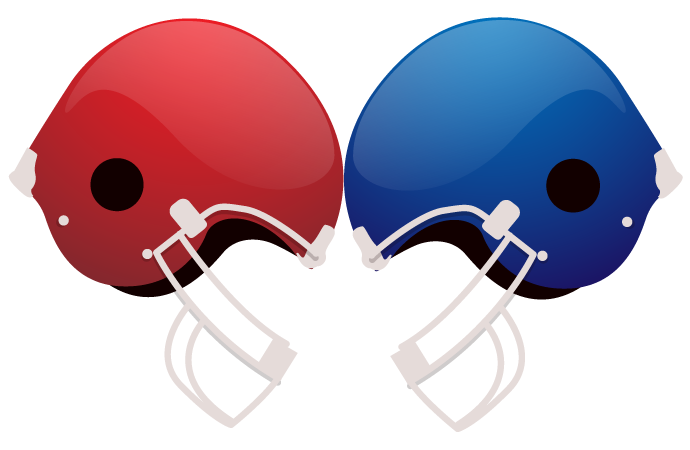

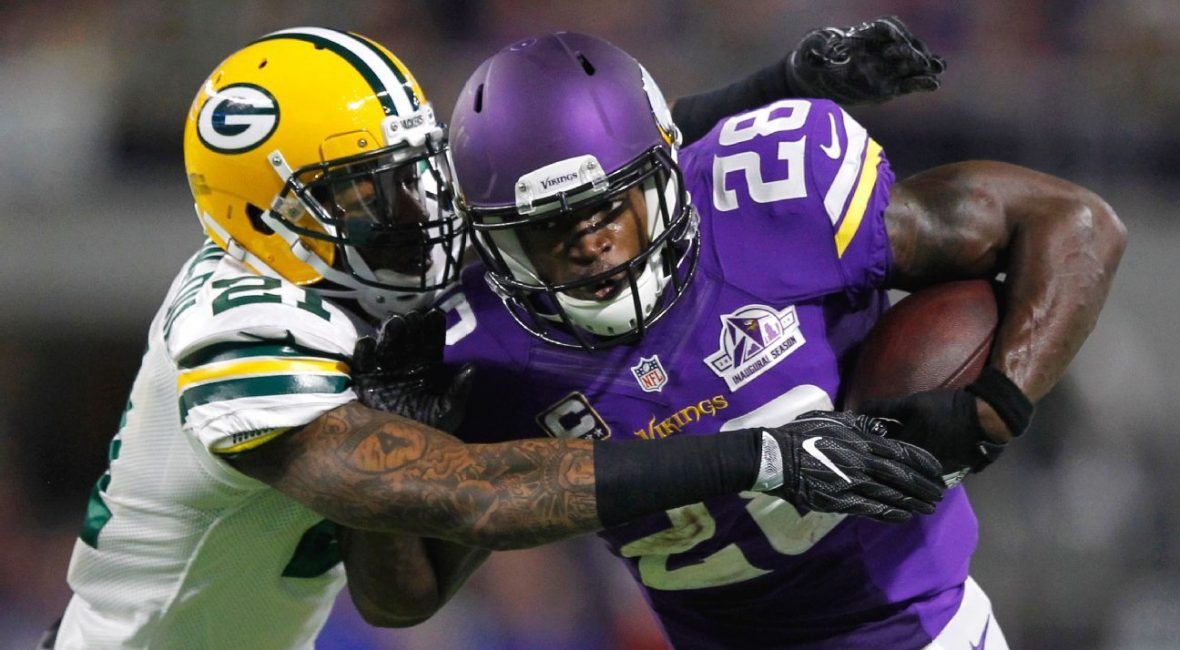


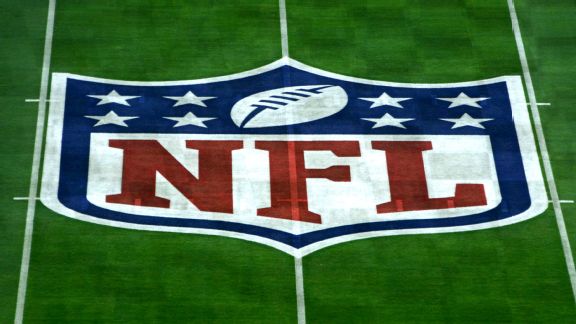 Free agency begins on March 9, the start of the NFL’s new league year. The deadline to franchise or transition tag a player is March 1. Here’s more from ESPN.com:
Free agency begins on March 9, the start of the NFL’s new league year. The deadline to franchise or transition tag a player is March 1. Here’s more from ESPN.com: